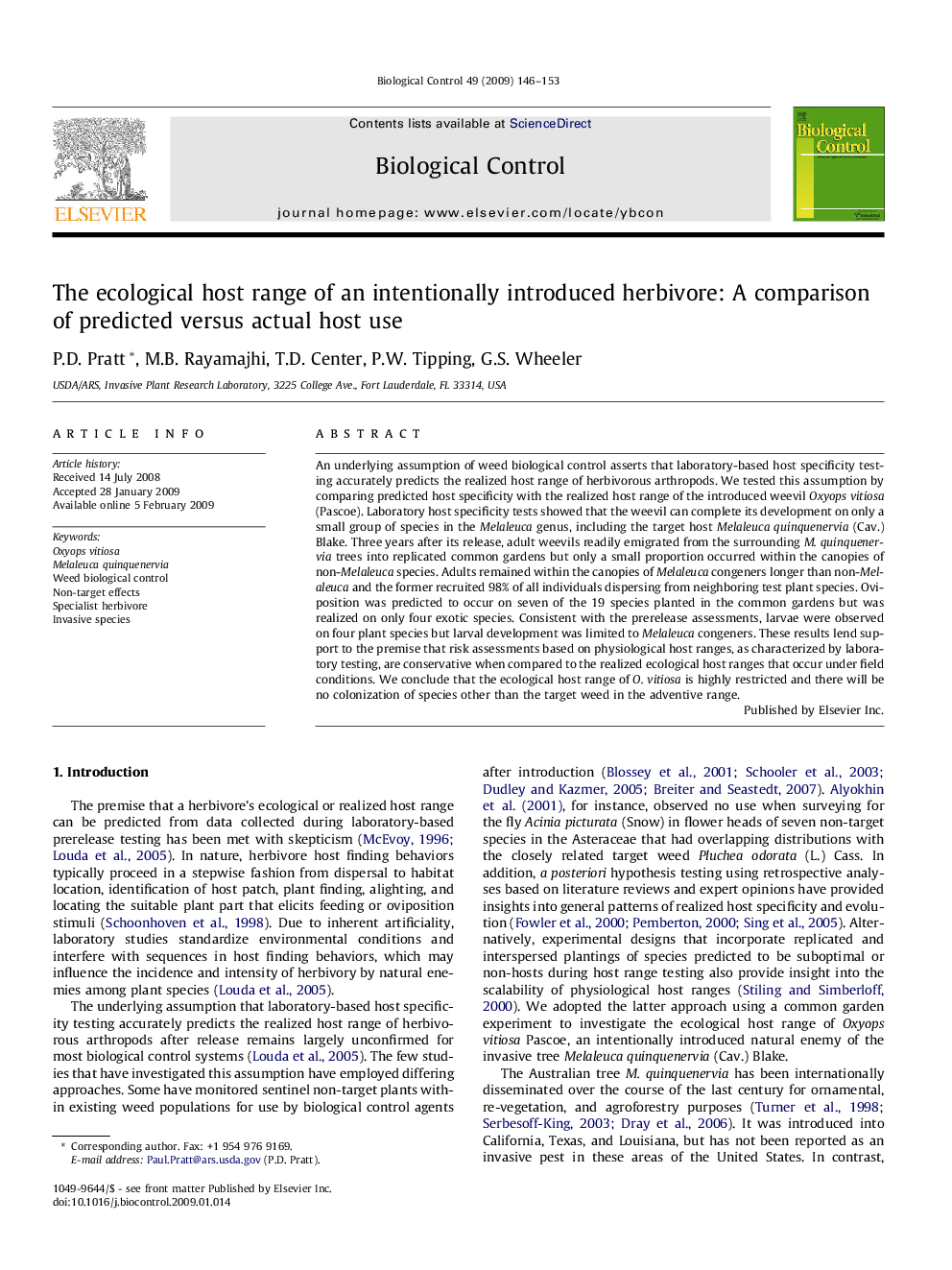| Article ID | Journal | Published Year | Pages | File Type |
|---|---|---|---|---|
| 4504841 | Biological Control | 2009 | 8 Pages |
An underlying assumption of weed biological control asserts that laboratory-based host specificity testing accurately predicts the realized host range of herbivorous arthropods. We tested this assumption by comparing predicted host specificity with the realized host range of the introduced weevil Oxyops vitiosa (Pascoe). Laboratory host specificity tests showed that the weevil can complete its development on only a small group of species in the Melaleuca genus, including the target host Melaleuca quinquenervia (Cav.) Blake. Three years after its release, adult weevils readily emigrated from the surrounding M. quinquenervia trees into replicated common gardens but only a small proportion occurred within the canopies of non-Melaleuca species. Adults remained within the canopies of Melaleuca congeners longer than non-Melaleuca and the former recruited 98% of all individuals dispersing from neighboring test plant species. Oviposition was predicted to occur on seven of the 19 species planted in the common gardens but was realized on only four exotic species. Consistent with the prerelease assessments, larvae were observed on four plant species but larval development was limited to Melaleuca congeners. These results lend support to the premise that risk assessments based on physiological host ranges, as characterized by laboratory testing, are conservative when compared to the realized ecological host ranges that occur under field conditions. We conclude that the ecological host range of O. vitiosa is highly restricted and there will be no colonization of species other than the target weed in the adventive range.
